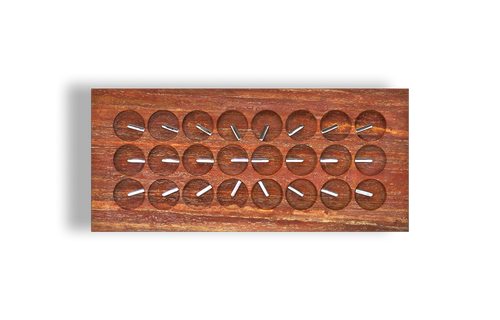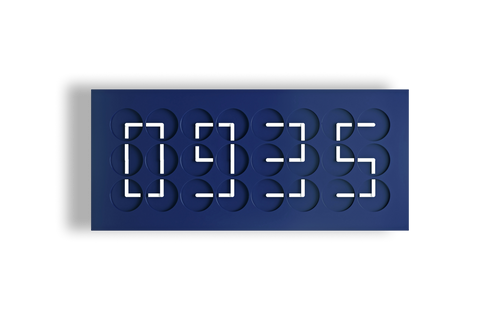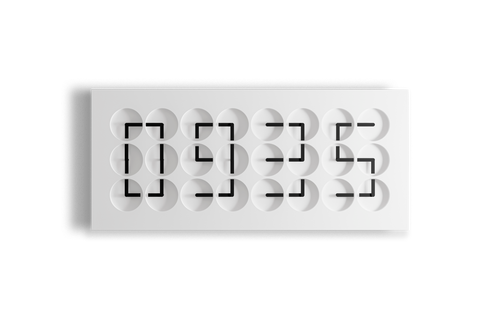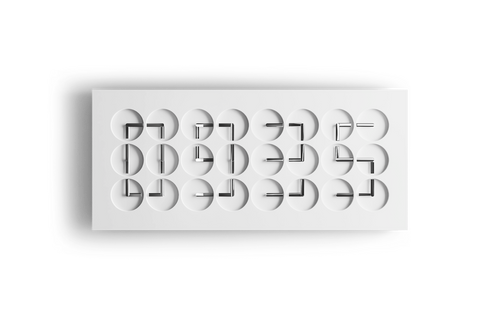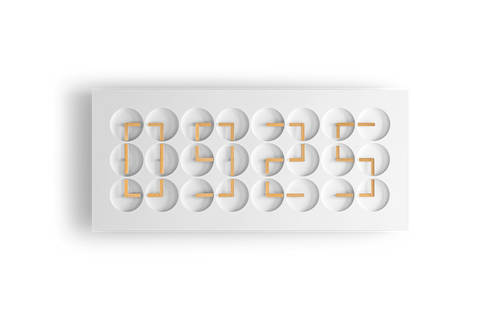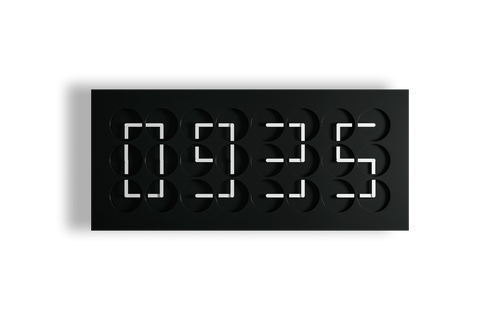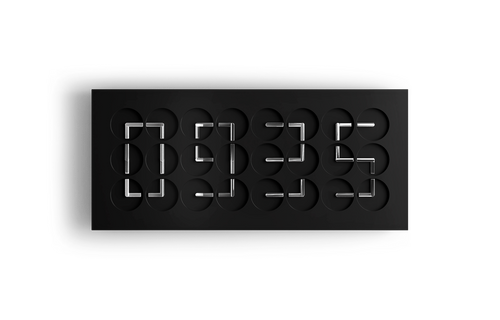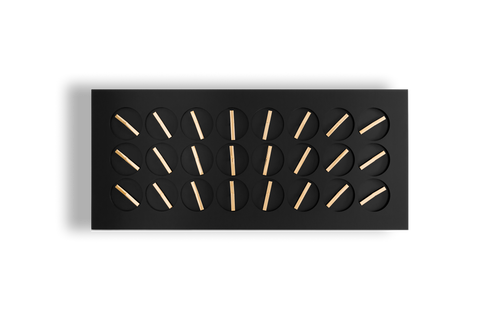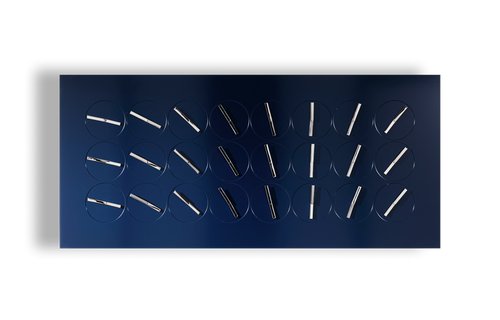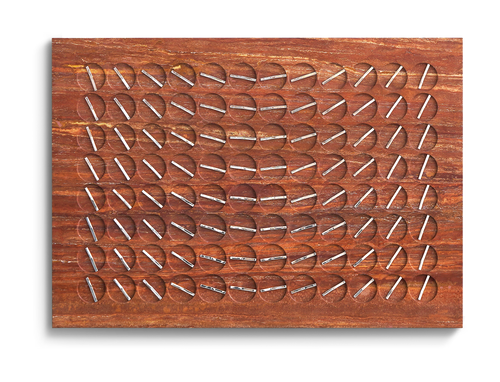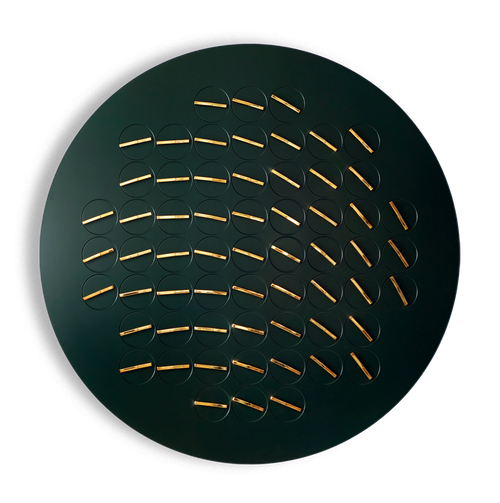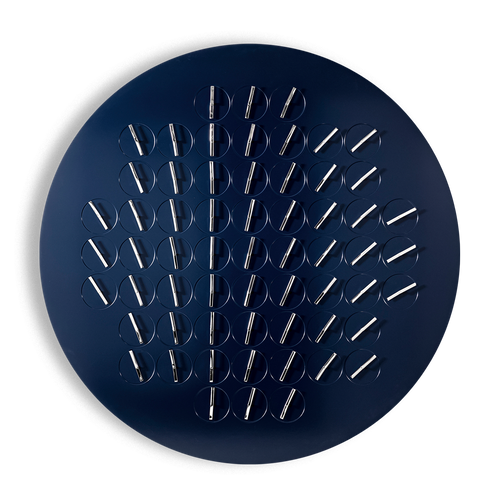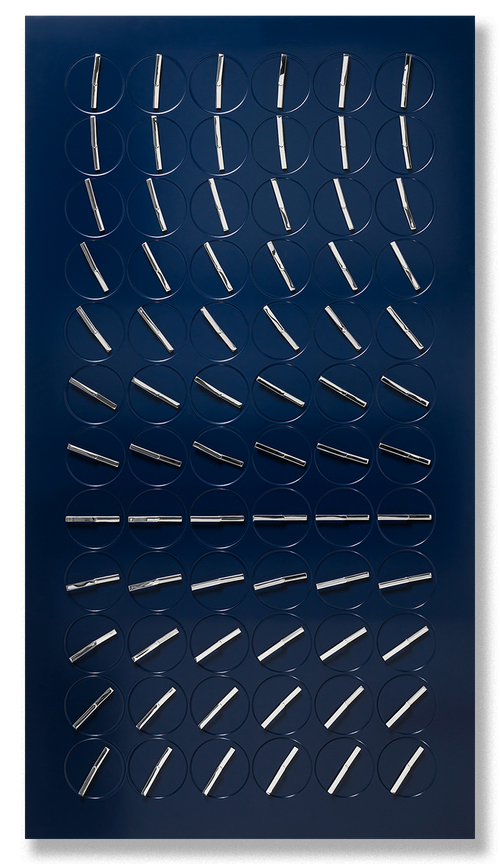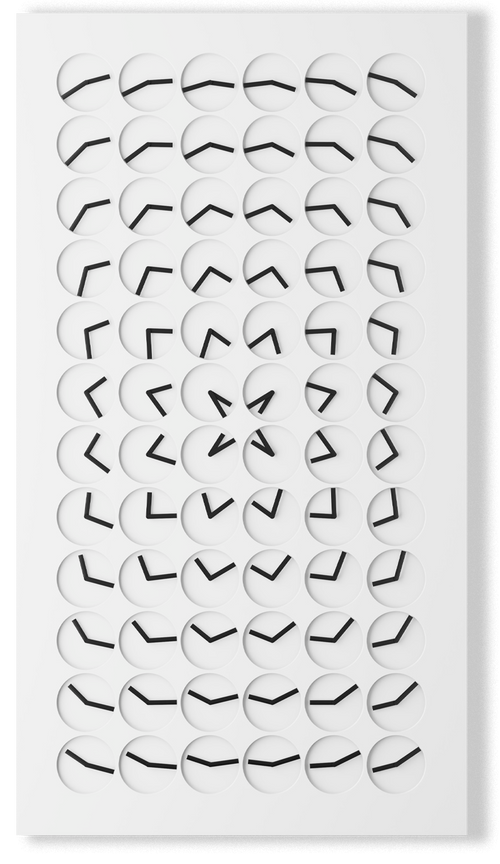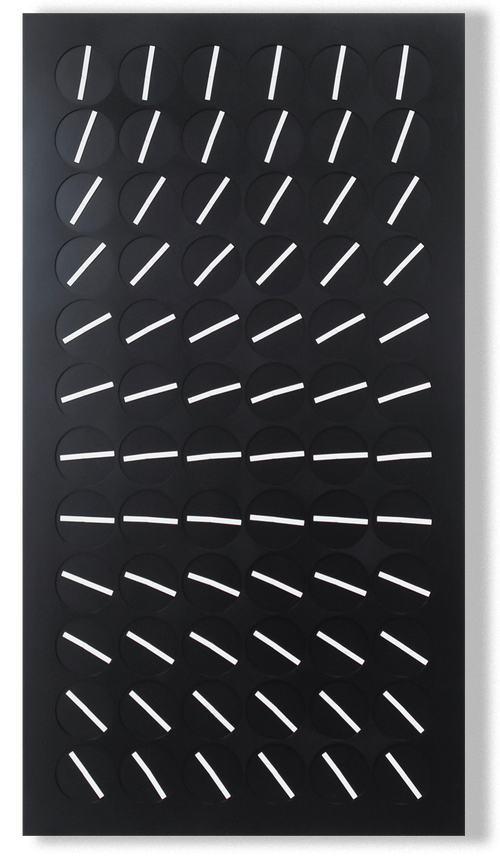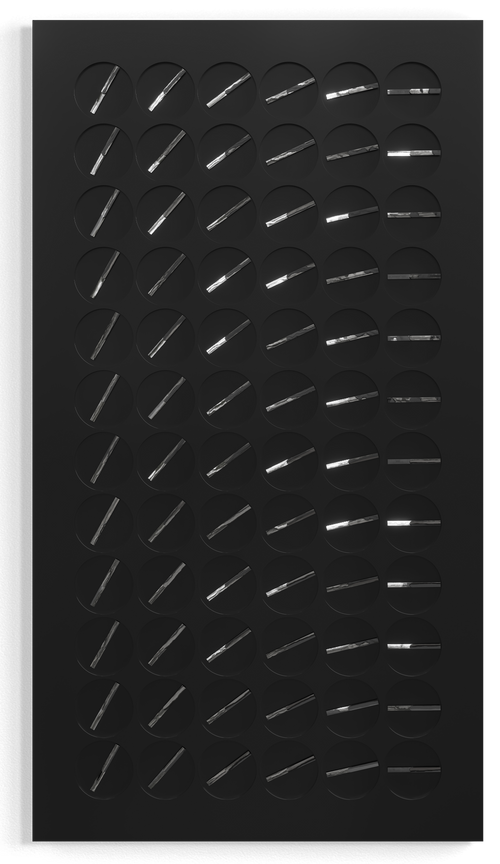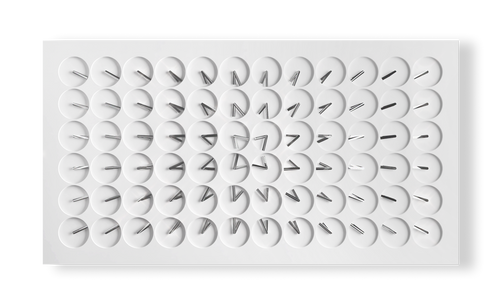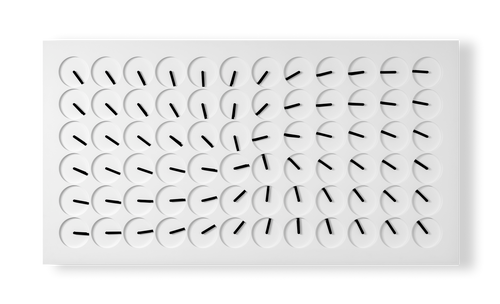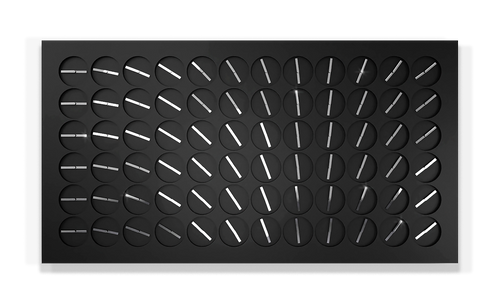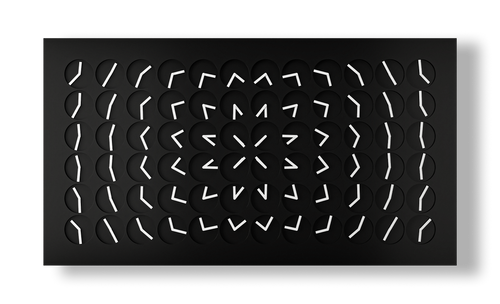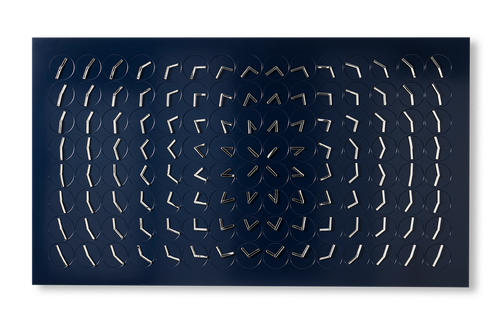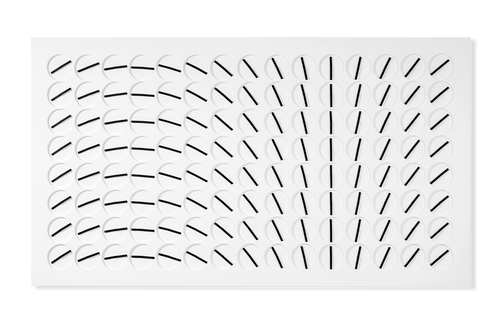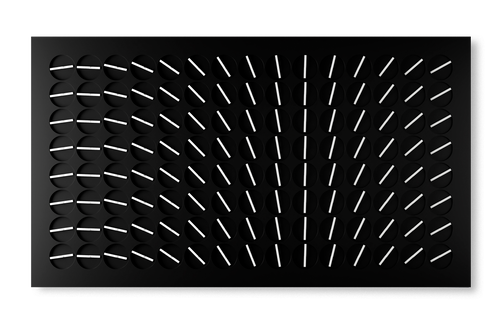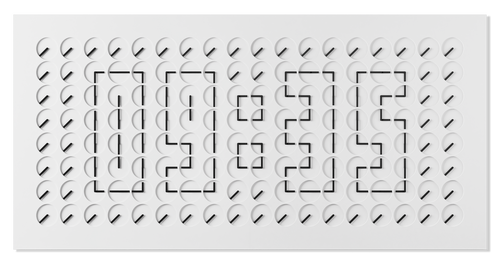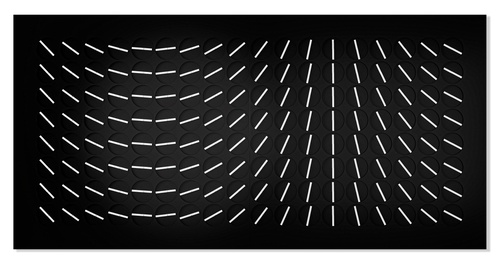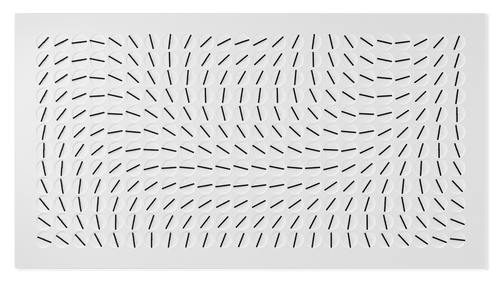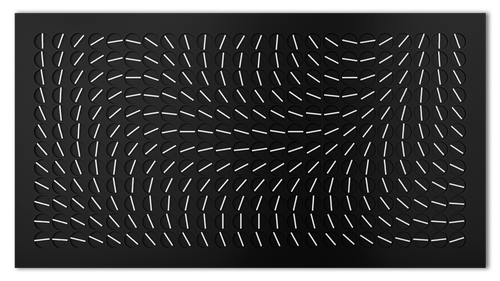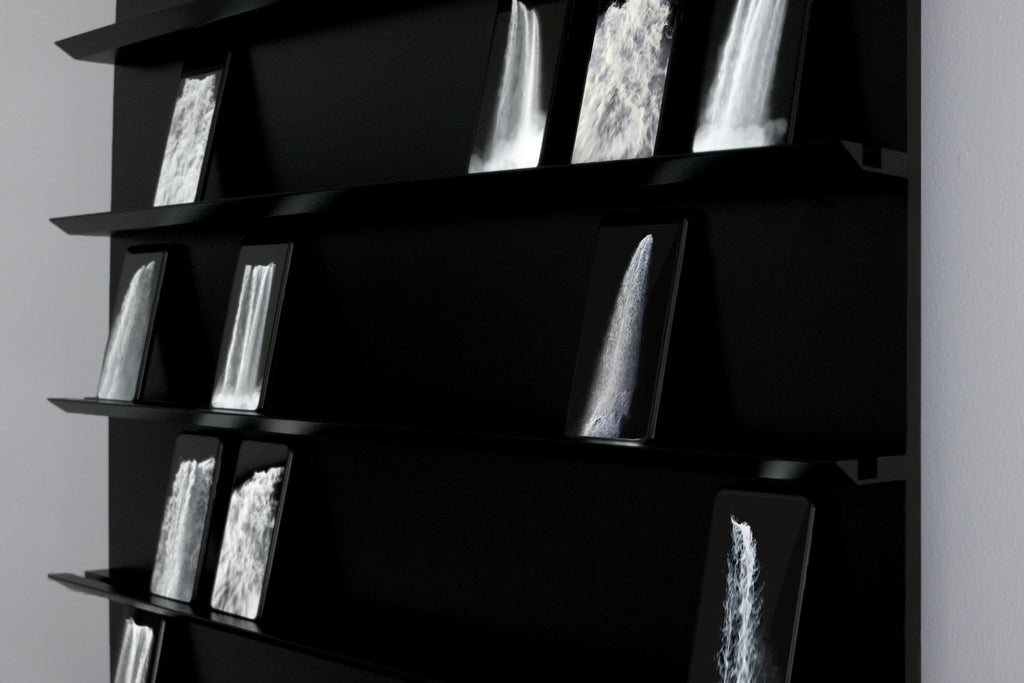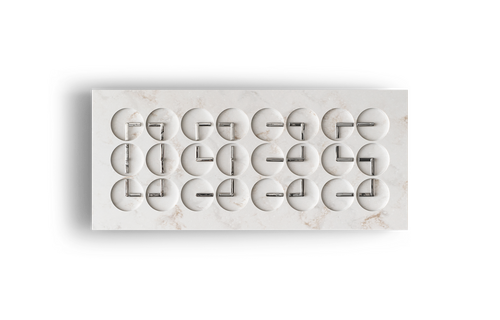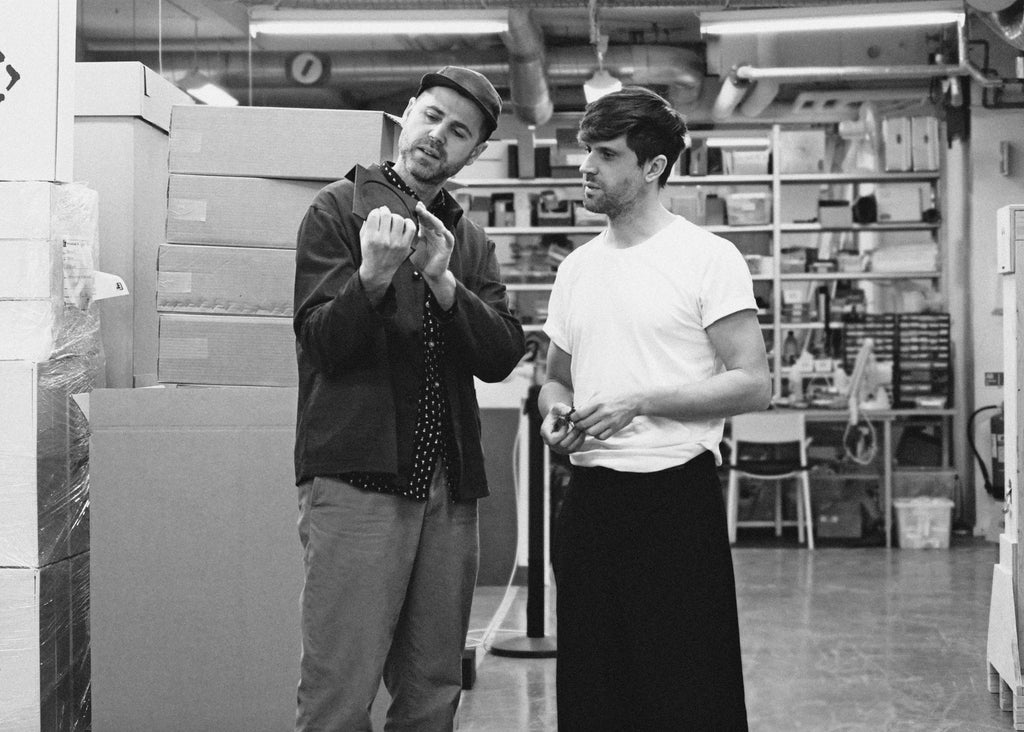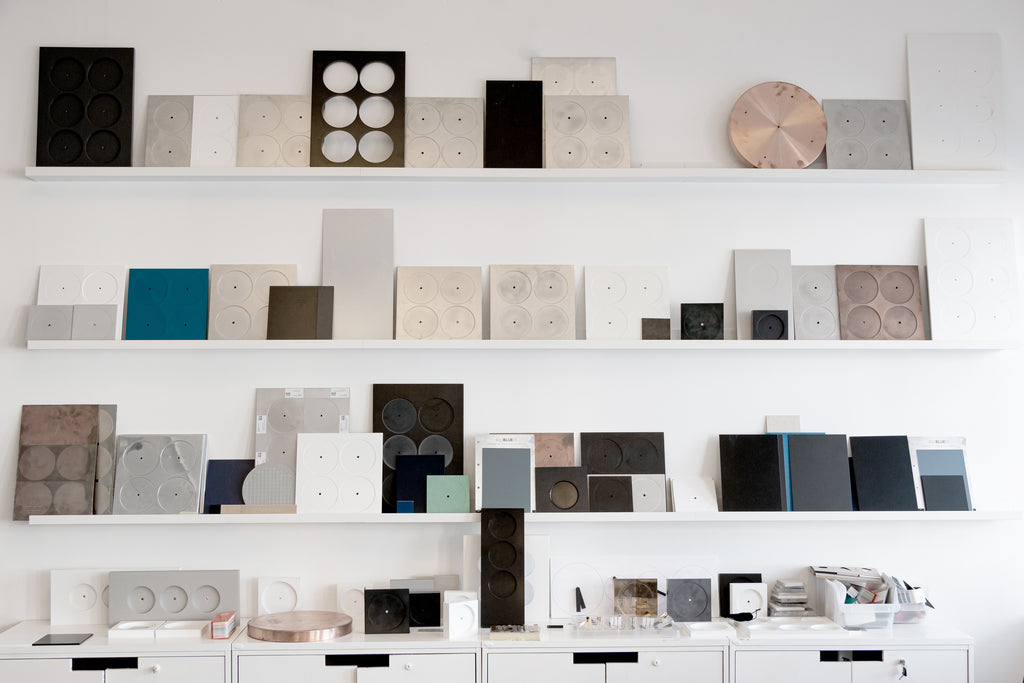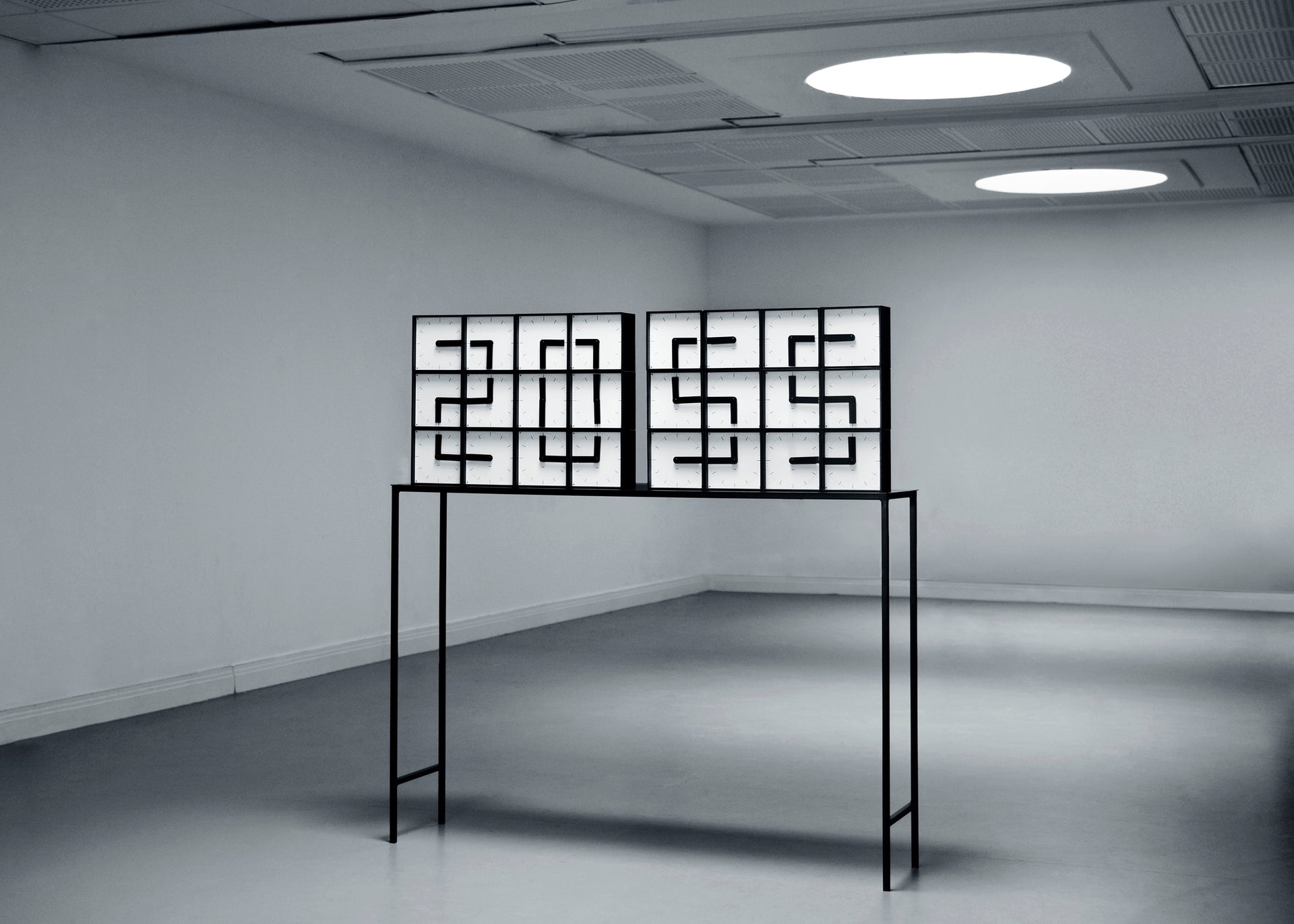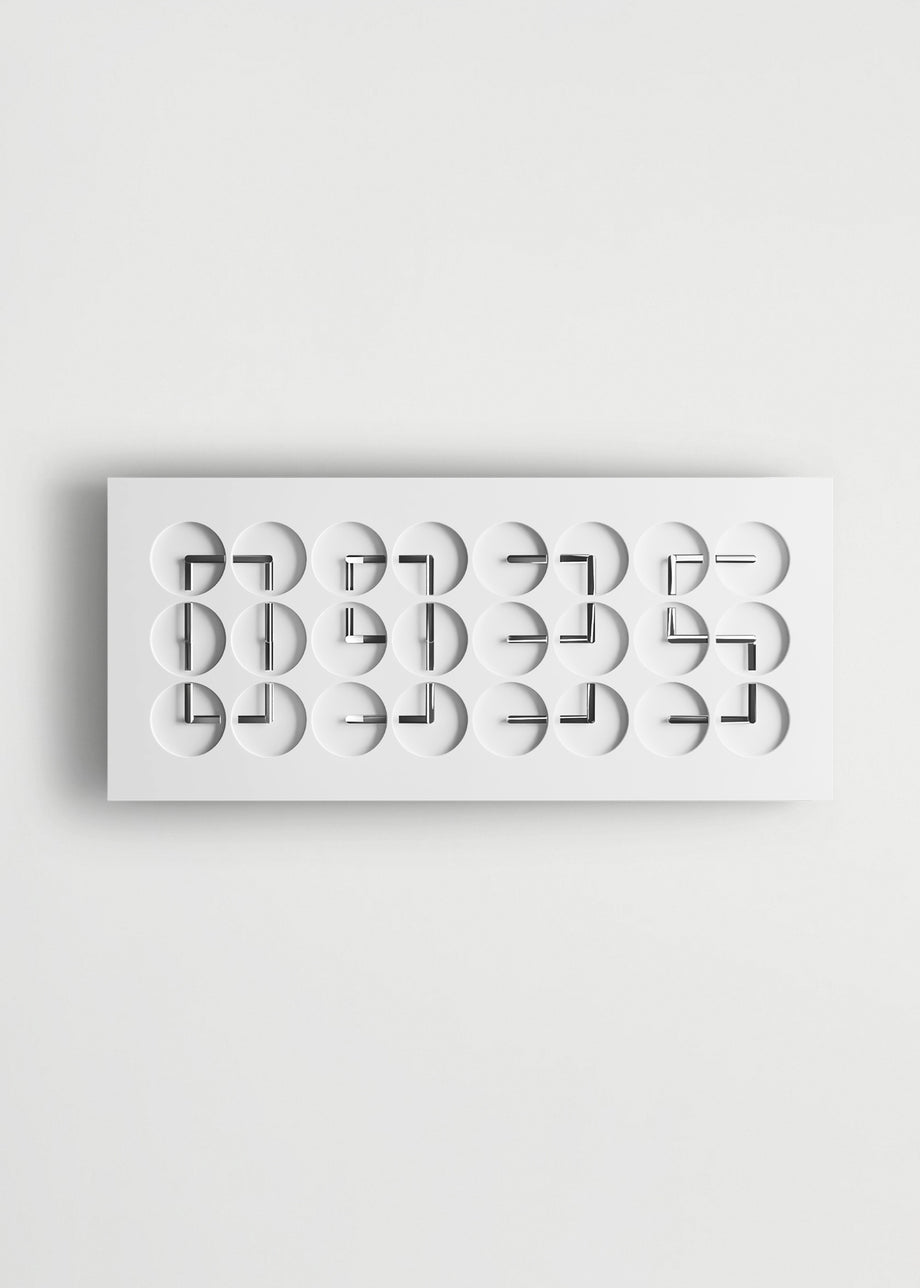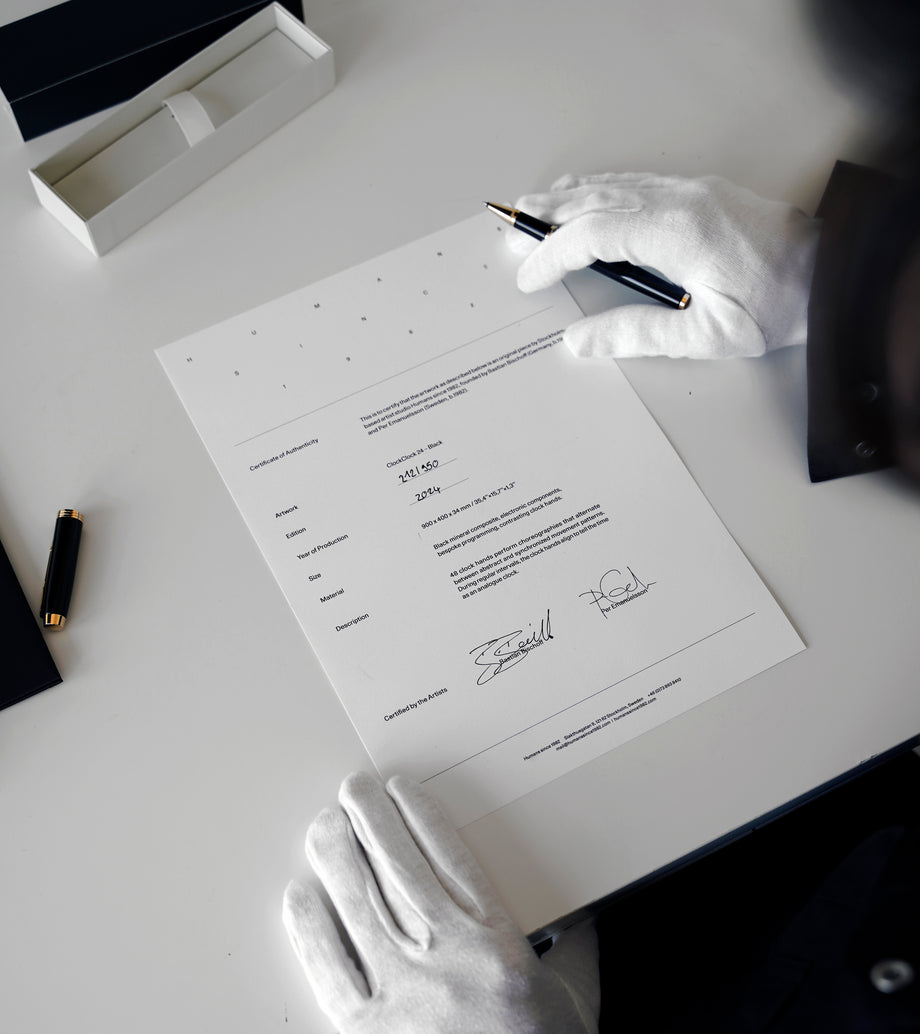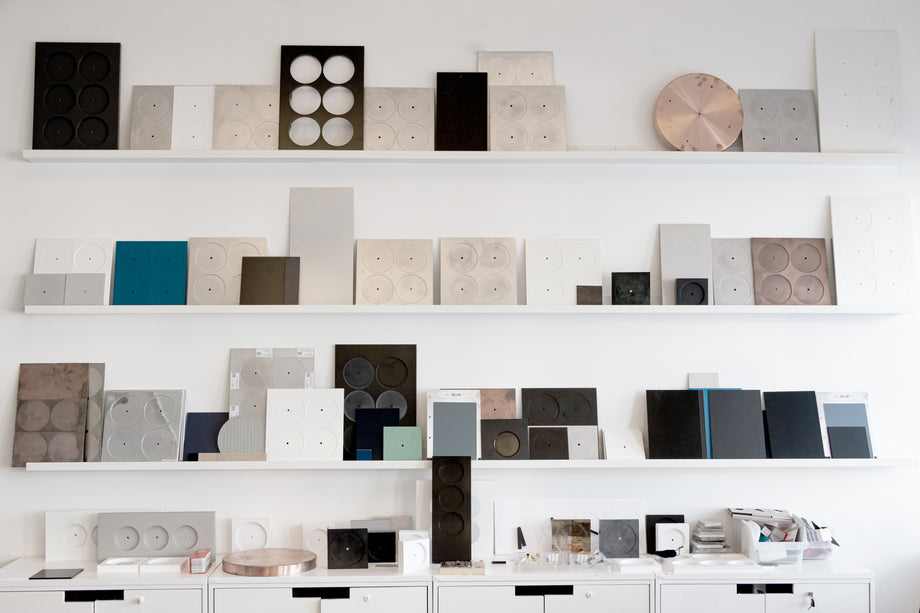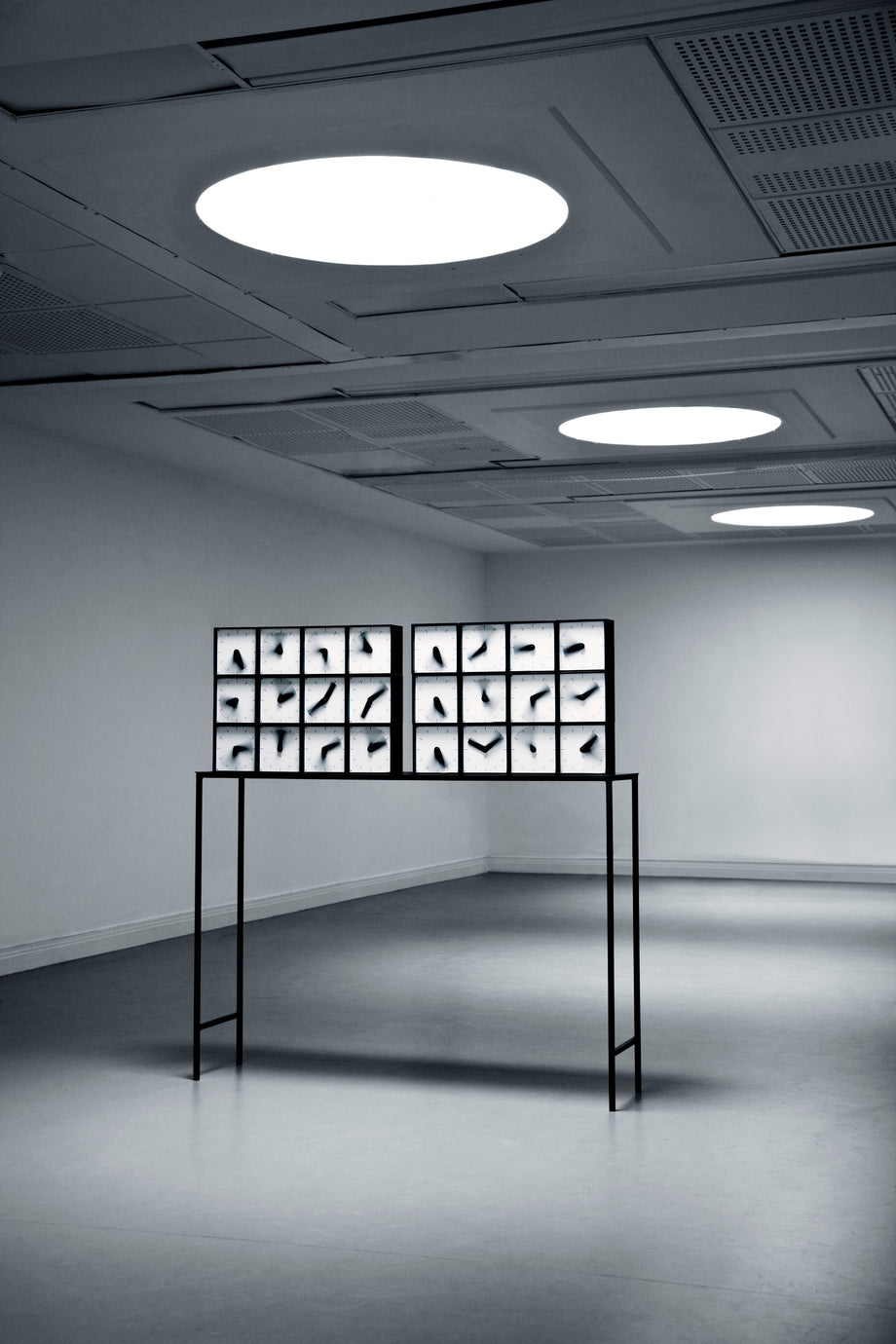
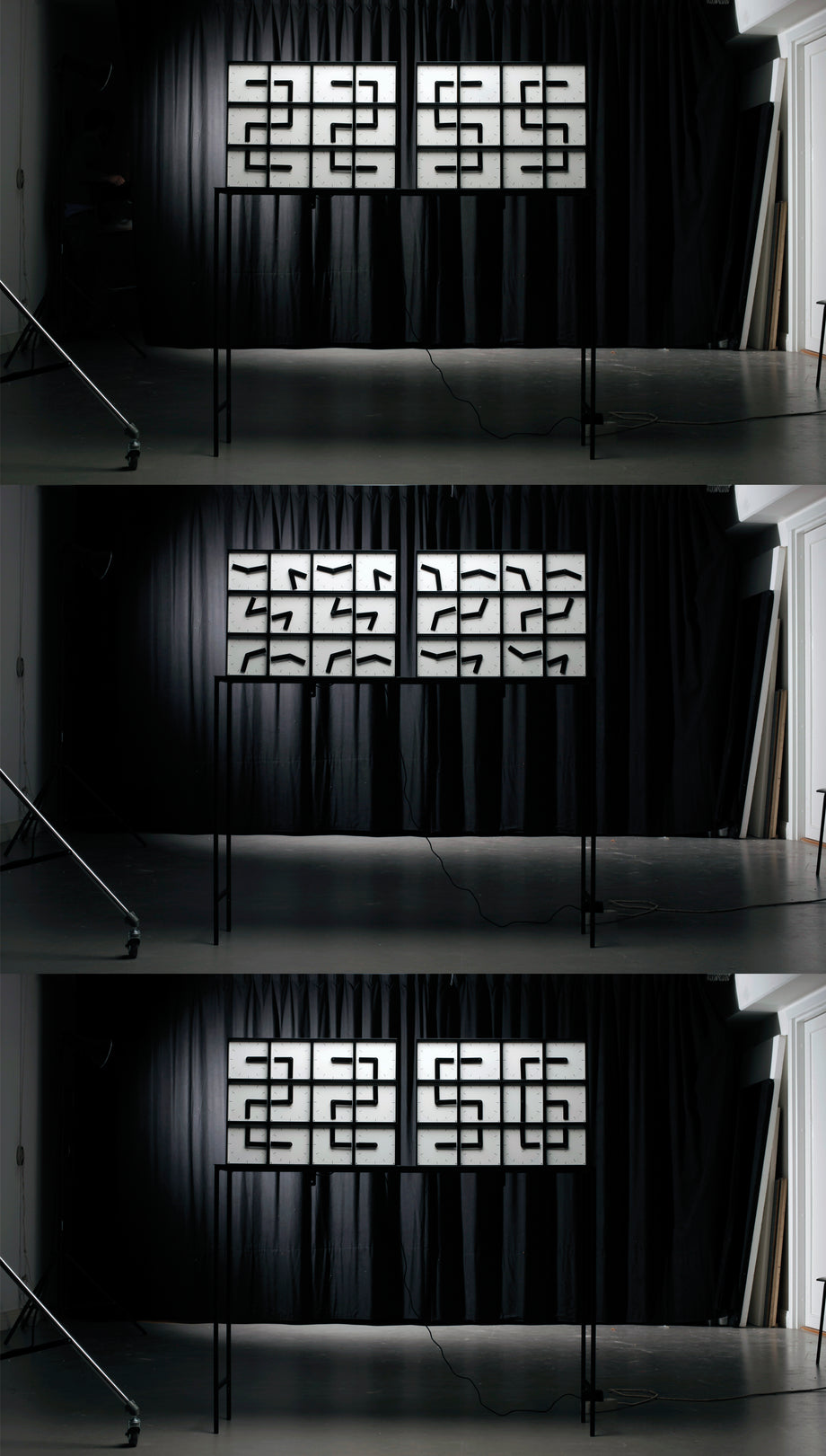
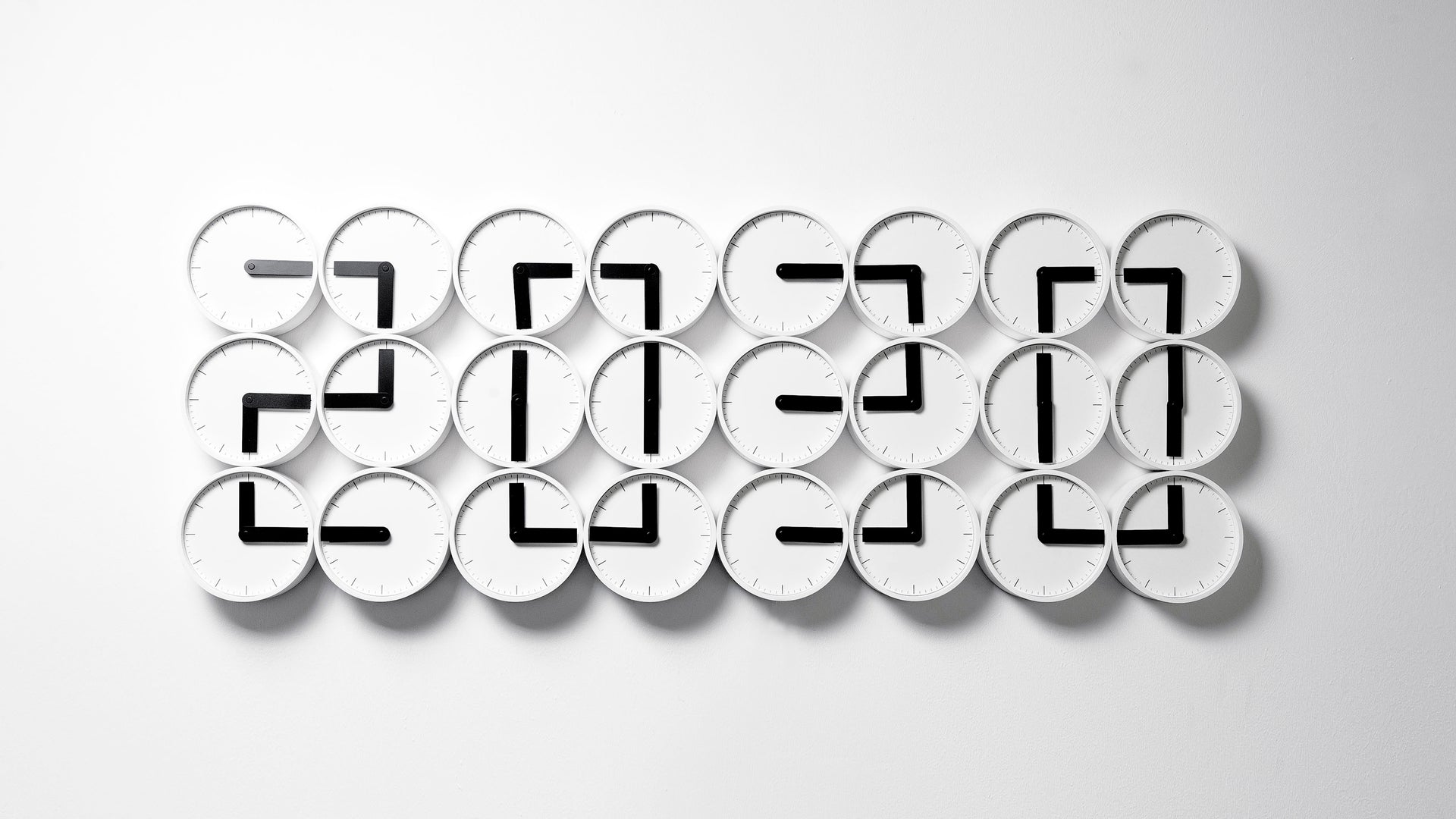
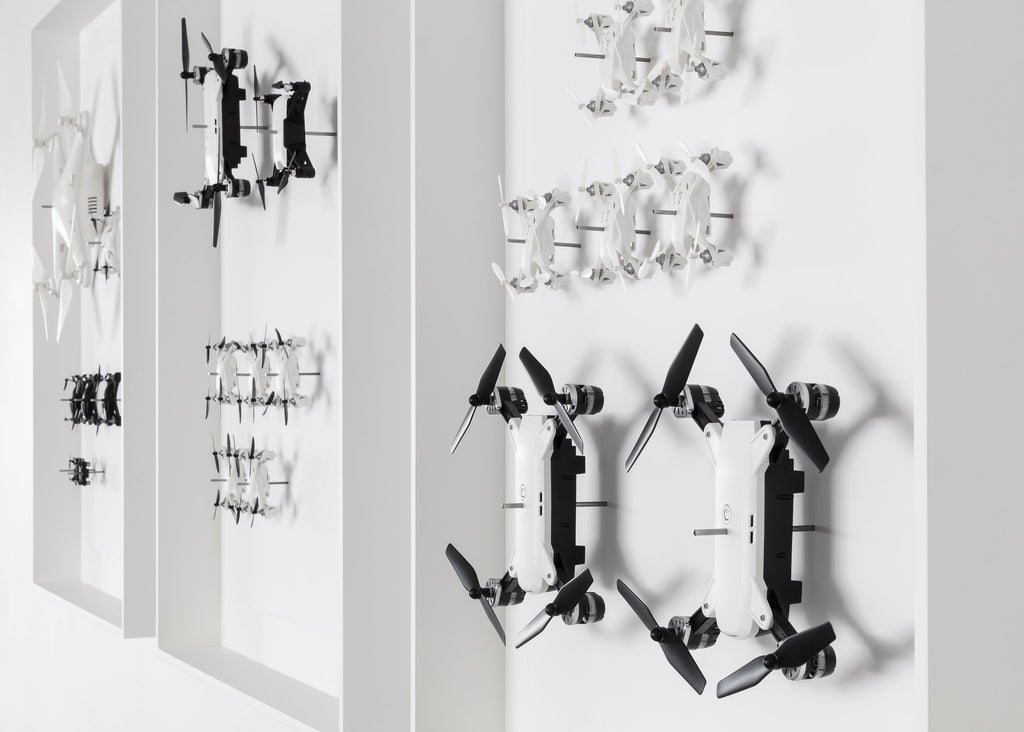
Collection of Drones
Collection of Drones is a series of works that acquires and presents drones as found objects, creating a collection that mimics the care and curiosity with which an entomologist approaches insects.
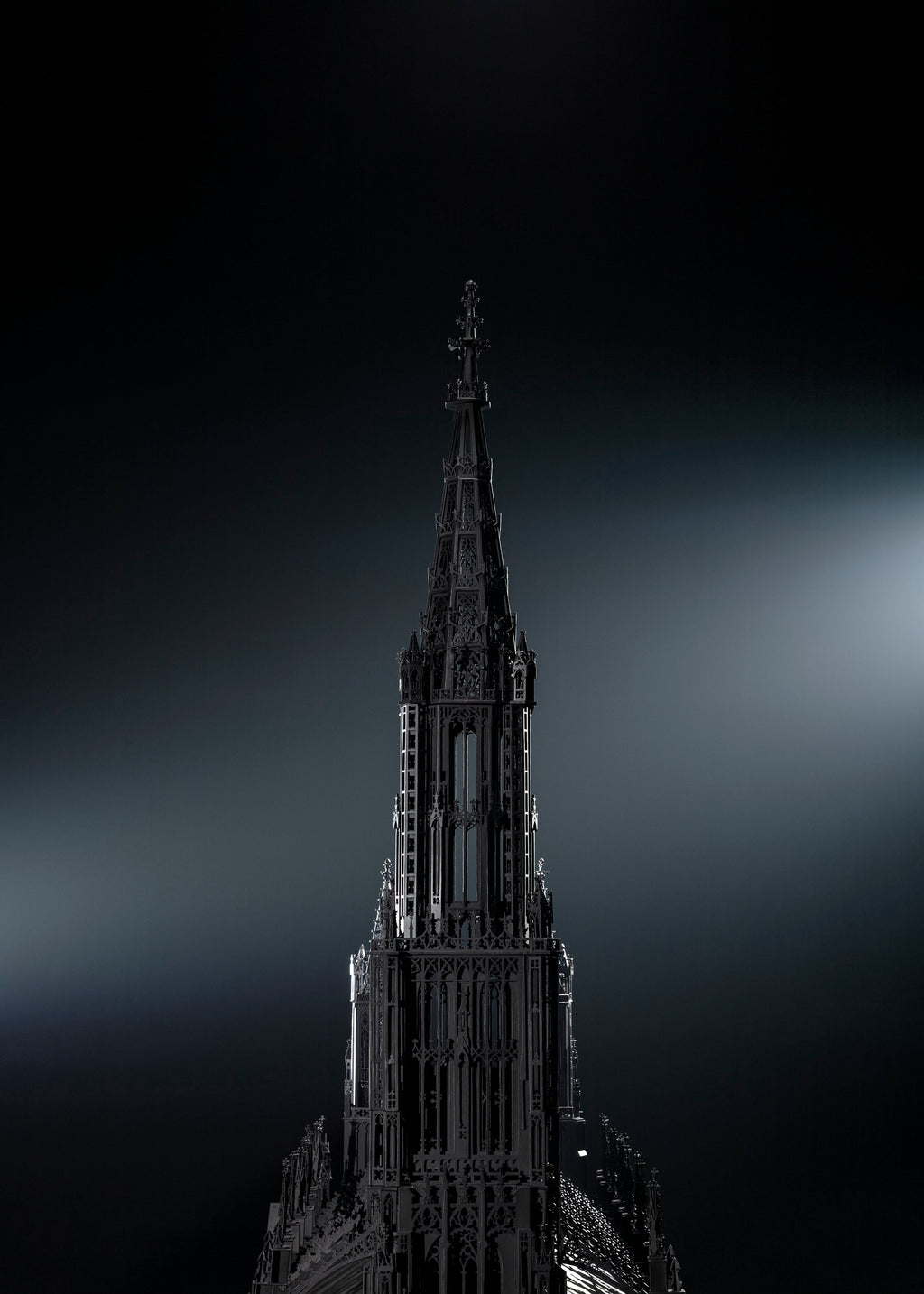
Rocking Church
Rocking Church is a large kinetic sculpture, of which the focal point is a 3 meter high replica of the Gothic church Ulm Minster.
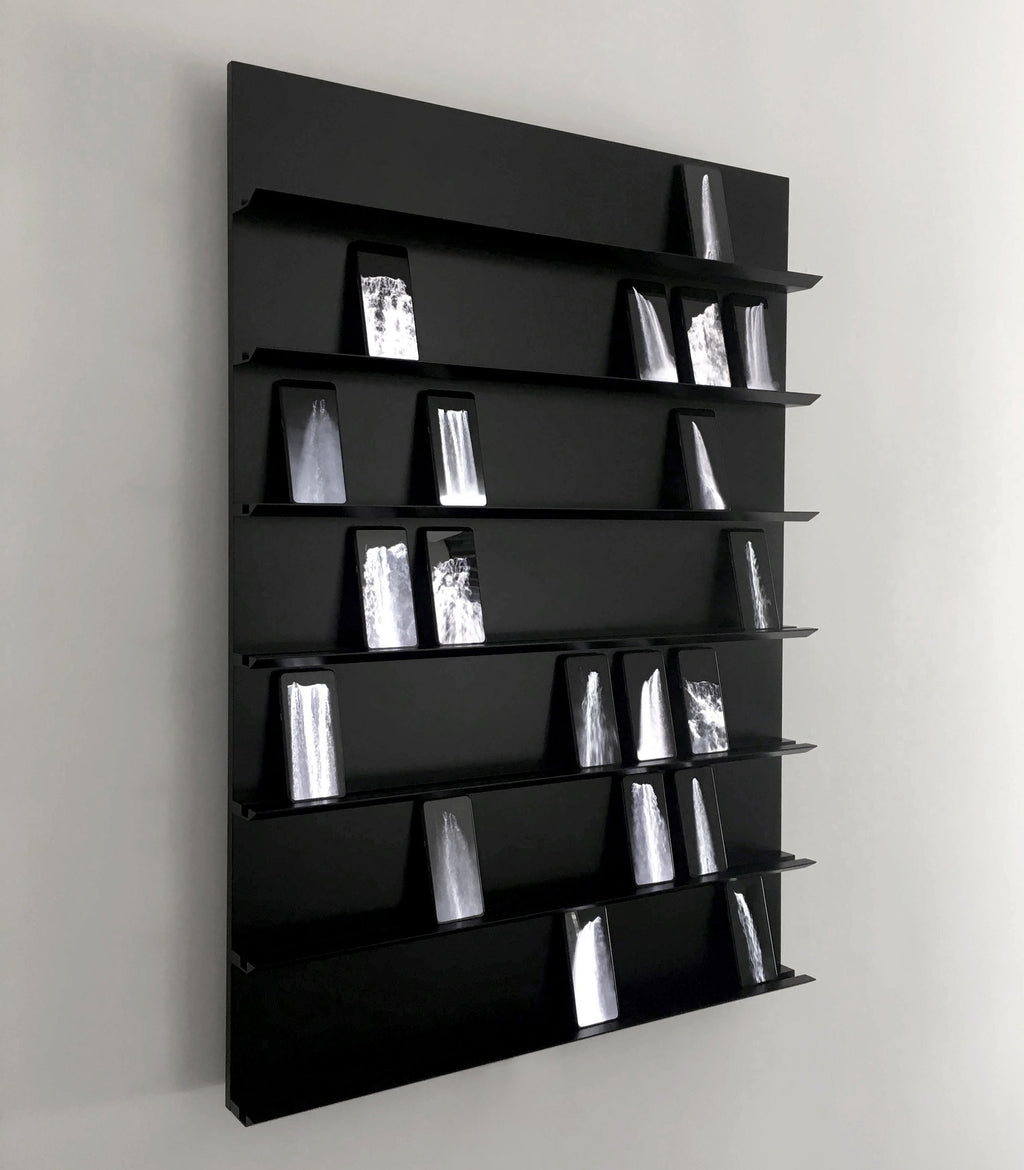
Waterfalls (Tiered)
Collection of Motion: Waterfalls (Tiered) comprises twenty unique, digitally simulated loops of waterfalls based on real-world falls.
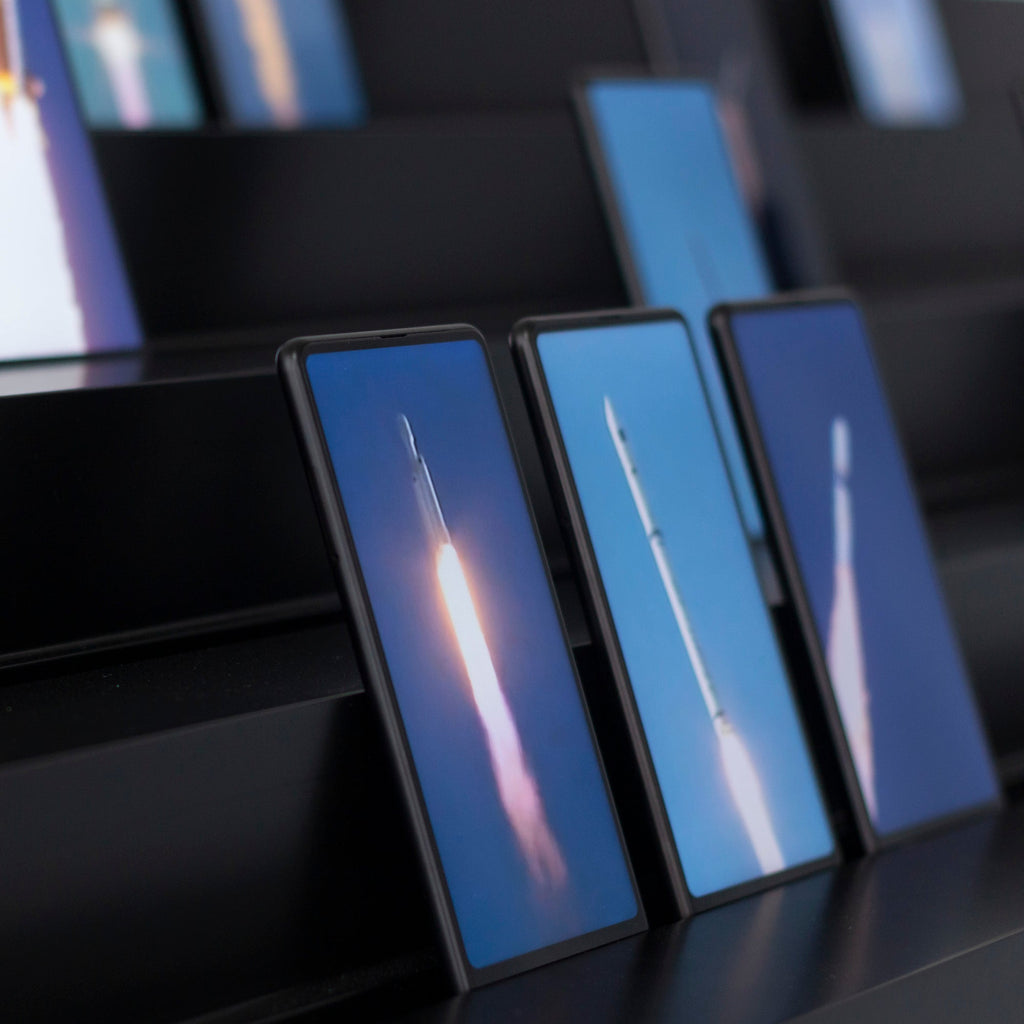
Rockets
Collection of Motion: Rockets (Hyper Hope), presents found footage of rocket launches atop an alterlike sculpture, accompanied by the looped audio of cheering crowds.
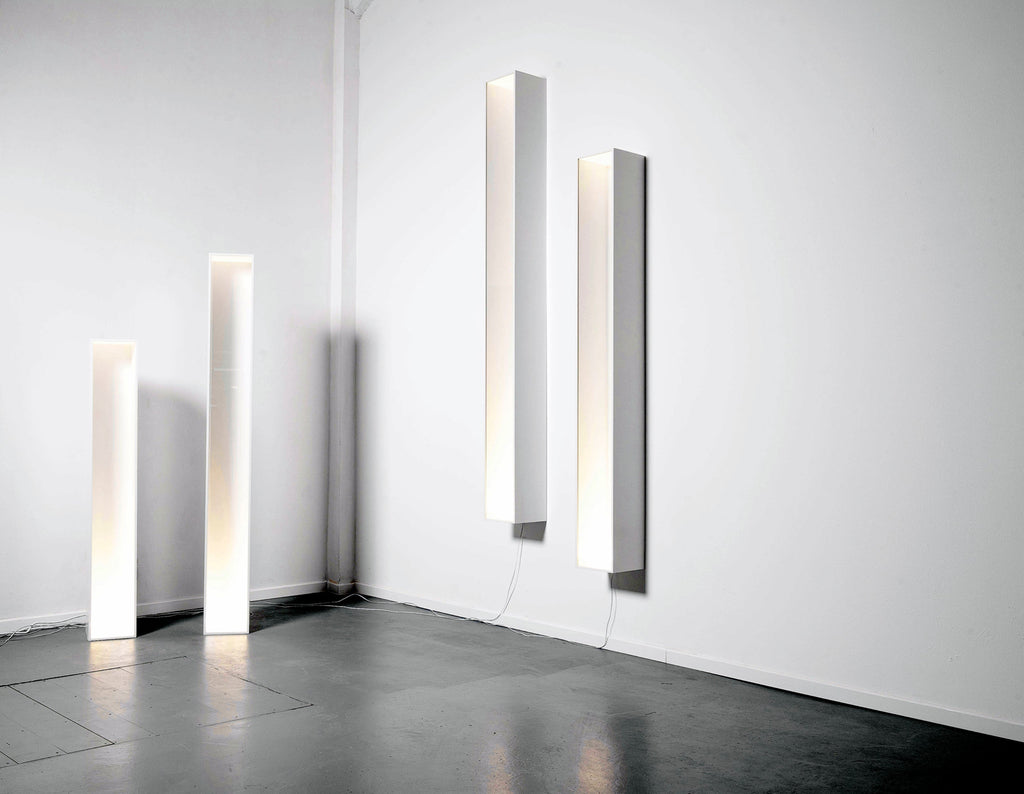
Light on Ground
Light on Ground is a light sculpture including over 80 LEDs of different types. Released as a complimentary pair of limited edition works it was launched in Basel (Design Miami/Basel 2012) and New York (Phillips de Pury & Company)
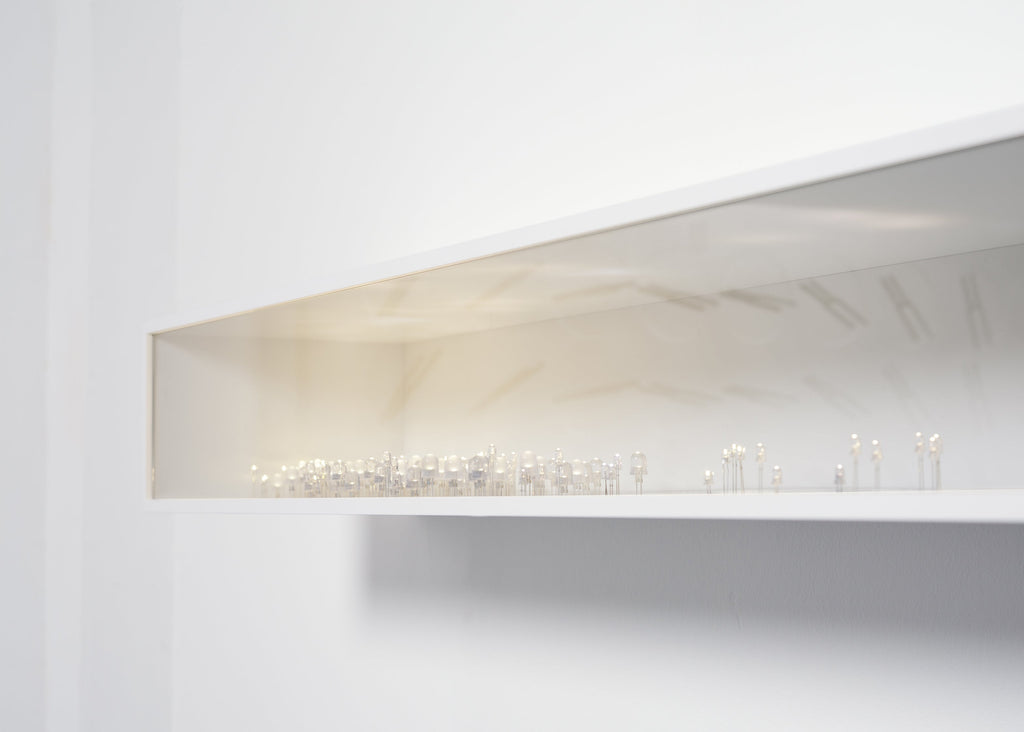
Light Line
Light Line remarkably continues Humans since 1982’s explorations of light and led illuminants in all their diversity.
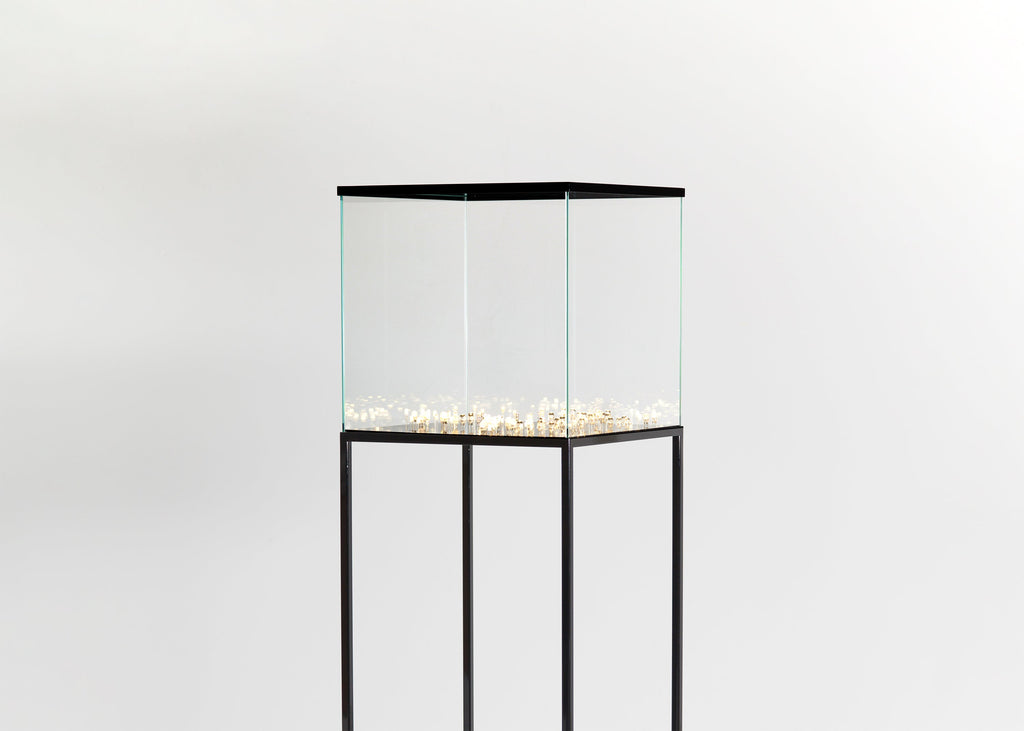
Light Culture
Exhibiting each individual bulb as a specimen, an industrial product, Light Culture also explores the aura of groups of led illuminants as a resemblance to petri dish grown cell cultures.
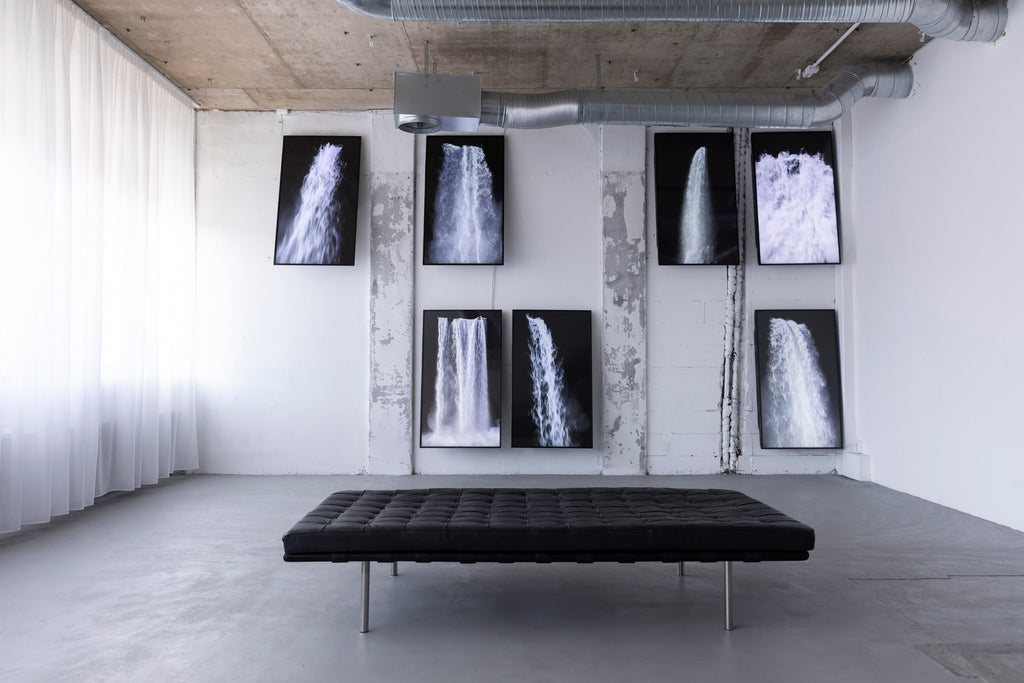
Waterfalls (Cascade)
Collection of Motion: Waterfalls (Cascade) comprises up to twenty unique, digitally simulated loops of waterfalls based on real-world falls.
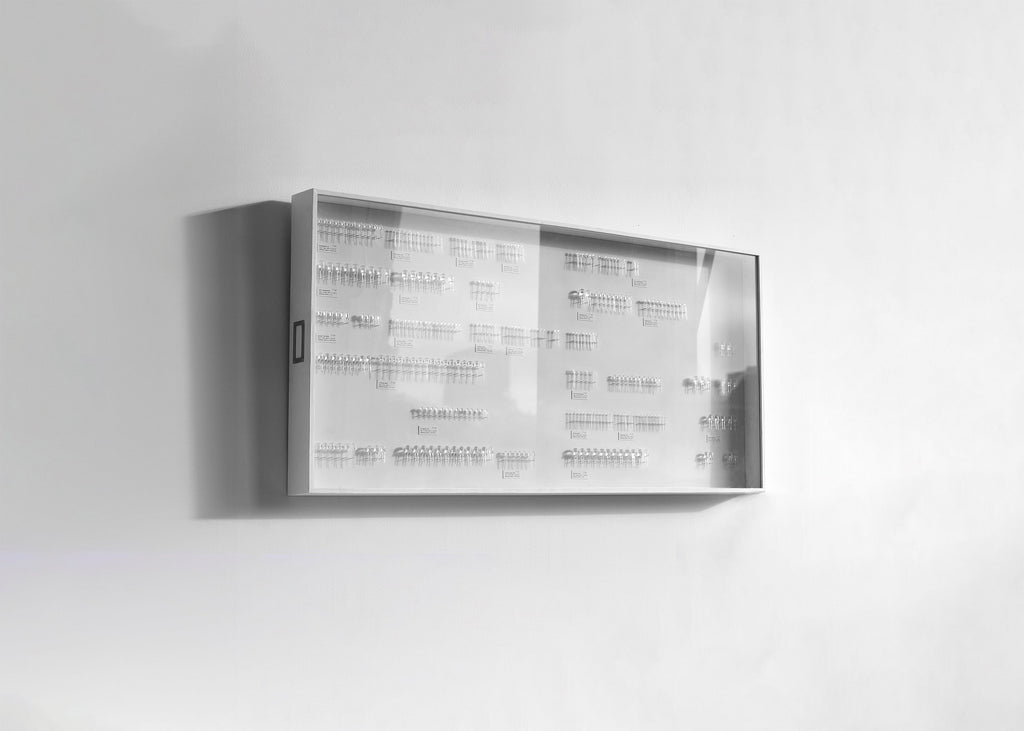
Collection of Light
Collection of Light is a collection of LEDs which together constitute an artwork that retains the functionality of it’s lighting components.
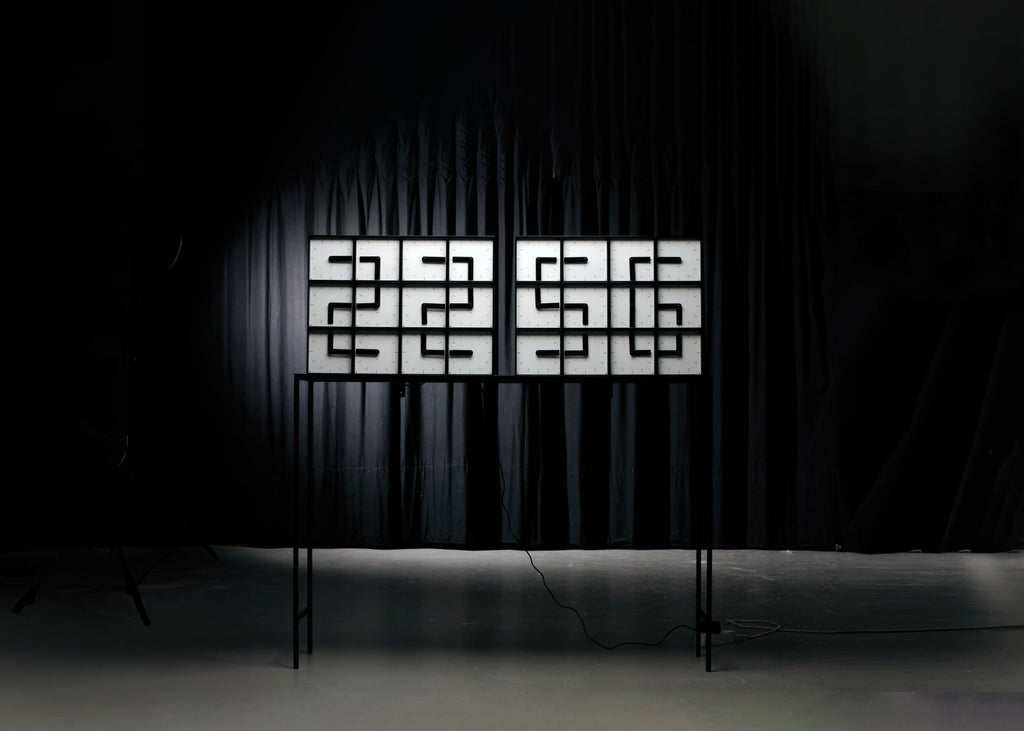
The Clock Clock Project
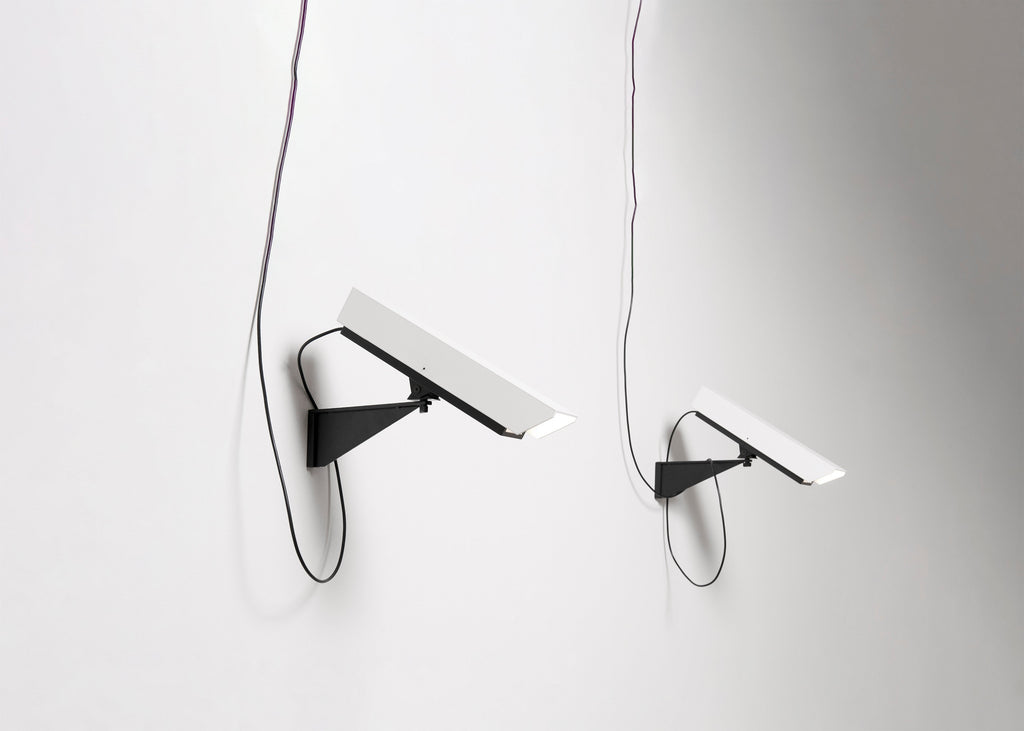
Surveillance Light Project
Humans since 1982 very first project is a satirical piece that discusses surveillance in society. With an Orwellian ‘1984’ feel to it, the artwork blends the typical appearance of a surveillance camera with that of a light, creating an ambiguous reflection on the artists' thoughts about the political future.

